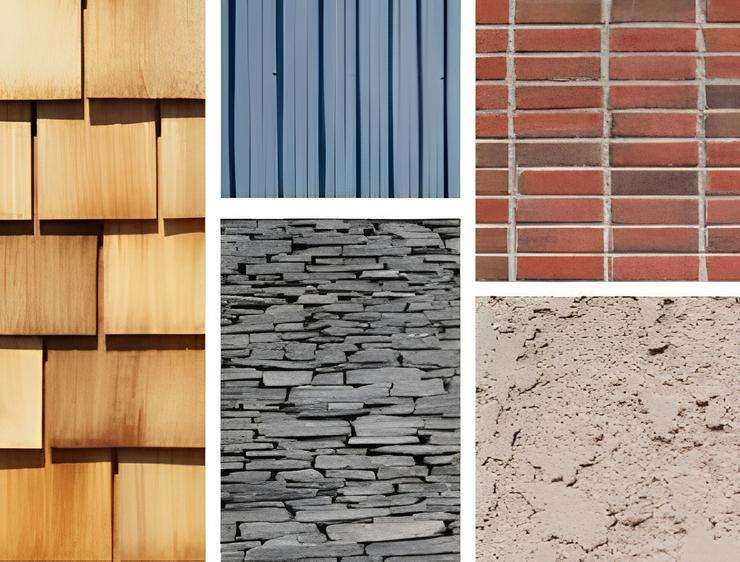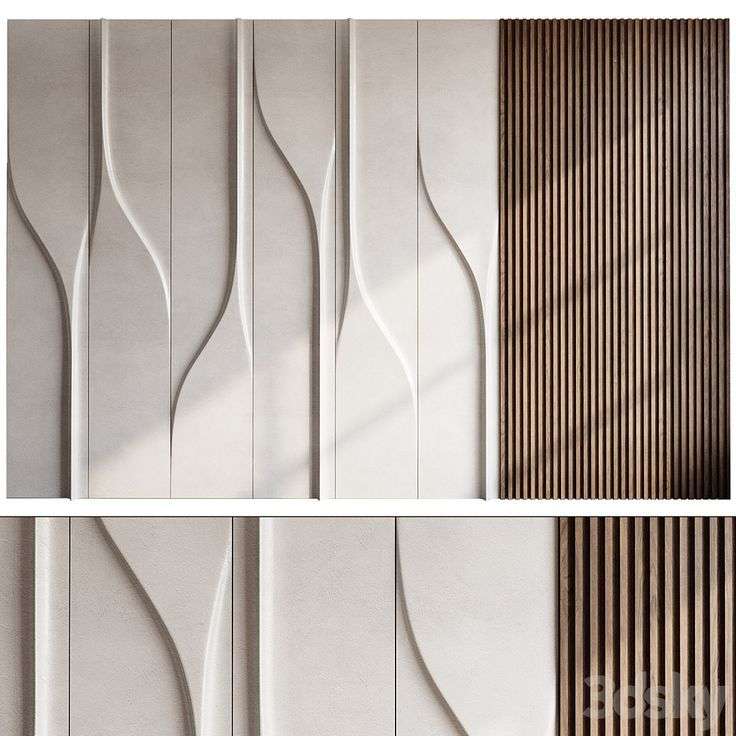When it comes to interior design, texture is often the unsung hero. It’s not just about colors and shapes; textures have the power to completely change the way a space feels. By combining different materials, you can add depth, interest, and even warmth to a room. Whether you’re creating a cozy living room or a stylish kitchen, the thoughtful integration of various textures is key to achieving a visually dynamic and inviting interior.
At Scale & Structure, we specialize in creating spaces that go beyond the surface. In this blog, we’ll explore how to use texture play in your home, the importance of combining different materials, and how to achieve a balanced, cohesive look that feels luxurious and welcoming.

Why Texture Matters in Interior Design
Texture adds richness and dimension to any space, making it feel more dynamic and engaging. By using different materials like wood, metal, glass, textiles, and stone, you can evoke different sensations—from warmth and comfort to cool sophistication. A well-balanced mix of textures also helps create contrast, keeping a room from feeling flat or monotonous.
But texture isn’t just about variety; it’s about knowing how and where to incorporate it. Too much texture can overwhelm a space, while too little can make it feel sterile and lifeless. The goal is to strike the perfect balance, creating visual interest without overloading the senses.
Key Textures to Consider in Your Home
To start creating an interior with layered texture, it’s essential to understand the materials and textures that can work well together. Here are some key textures you can incorporate into your design:
1. Wood: Warmth and Natural Appeal
Wood adds a warm, earthy texture to any room. Whether in furniture, flooring, or accent walls, wood creates a natural, grounded feeling. Different types of wood, like walnut, oak, or reclaimed wood, each offer their own unique grain patterns and colors.
- Why it works: Wood provides a rich, tactile texture that brings a natural element to interiors, making spaces feel cozy and inviting.
- Tip: Pair wooden elements with softer textures, such as plush velvet or linen, for a balanced contrast.
2. Metal: Sleek and Industrial
Metallic textures, such as brass, chrome, or matte black, can add a sleek, modern touch to any room. Whether in light fixtures, furniture, or hardware, metal adds a reflective quality that can help brighten a space and introduce a sense of sophistication.
- Why it works: Metal contrasts beautifully with organic textures like wood and fabric, creating a balance of warmth and sleekness.
- Tip: Use metal accents sparingly to avoid overwhelming the space. A few metal details, such as a metal-framed mirror or industrial-style pendant lights, can make a significant impact.
3. Glass: Transparency and Lightness
Glass is a transparent, light-reflecting material that can bring an airy, open feel to a space. Glass is commonly used in windows, doors, and furniture like tables and shelves. It can also be used for decorative elements like vases or light fixtures.
- Why it works: Glass creates a sense of openness and lightness, making spaces feel more expansive and visually interesting.
- Tip: Pair glass with heavier materials like wood or stone to create contrast and prevent the space from feeling too fragile.
4. Stone: Earthy and Timeless
Stone, whether it’s marble, granite, or limestone, adds a natural and timeless quality to any space. It works wonderfully in kitchens, bathrooms, and accent walls, where the material’s texture and pattern can serve as a focal point.
- Why it works: Stone has a tactile, grounding quality that works well with other natural materials like wood and textiles. It’s perfect for creating a luxurious yet earthy atmosphere.
- Tip: To keep stone from feeling too heavy, balance it with lighter textures like cotton or linen.
5. Textiles: Softness and Comfort
Textiles are a versatile way to introduce texture and comfort into any room. From the soft feel of velvet curtains to the cozy touch of a wool rug or linen cushions, fabrics allow for a range of tactile experiences.
- Why it works: Textiles offer softness and comfort while helping to balance out harder materials like metal and stone.
- Tip: Layer textiles in different patterns and materials, such as a velvet throw on a linen sofa, to create depth and interest.
6. Leather: Rich and Sophisticated
Leather brings a sense of luxury and sophistication to any space. It’s perfect for furniture pieces like chairs, sofas, and ottomans. Leather also adds a tactile richness that pairs beautifully with wood, metal, and textiles.
- Why it works: Leather has a unique texture that’s both durable and stylish. It can also develop a patina over time, making it even more visually intriguing.
- Tip: Use leather in moderation to avoid it from overpowering the space. A leather chair or accent pillow can be a stylish addition to your home.
How to Combine Textures for a Balanced Look
While mixing different materials is essential, it’s equally important to do so thoughtfully. Here are some tips for creating a harmonious, layered look in your interior design:
1. Layer Textures for Depth
Layering textures in a room creates depth and visual interest. You can achieve this by using a combination of materials, such as pairing a velvet sofa with linen cushions or a leather chair with a wool rug. The key is to balance the textures so that they complement one another rather than compete for attention.
- Tip: Mix rougher textures (like wood or stone) with softer, smoother textures (like silk or cotton) to keep the room feeling balanced.
2. Choose a Base Texture
Start with a dominant texture to ground the room, whether it’s wood, stone, or fabric. Once you’ve established the main texture, build the rest of the room’s design around it by adding complementary materials that enhance its appeal.
- Tip: For example, if you’re using wood as your base material, you can add metal and glass accents to create a balanced look that feels sophisticated but warm.
3. Play with Contrast
Creating contrast between materials is one of the most effective ways to highlight textures. For example, pairing a sleek metal lamp with a soft, plush velvet sofa adds visual tension and excitement. Similarly, pairing a marble countertop with a soft wool rug creates a striking juxtaposition of materials.
- Tip: Don’t be afraid to experiment with contrasts—whether that’s pairing industrial-style elements with rustic charm or mixing high-end finishes with more casual textures.
4. Keep the Color Palette Cohesive
While mixing different materials, keep your color palette cohesive to avoid creating a chaotic or mismatched look. Neutral tones like whites, blacks, and grays allow you to experiment with various textures without overwhelming the space. You can always add pops of color through textiles or decorative accessories.
- Tip: Stick to a base color scheme and then layer in other shades and textures that enhance the room’s mood. This approach ensures a cohesive and polished design.
Why Choose Scale & Structure for Your Interior Design Needs?
At Scale & Structure, we specialize in creating thoughtfully designed spaces that celebrate the beauty of texture. We understand that the key to a successful interior is balancing different materials and textures to create depth, warmth, and interest. Our team of expert designers will work with you to craft a space that feels both luxurious and inviting, using texture to its fullest potential.
Why Work with Scale & Structure?
- Expert Texture Integration: We have the expertise to combine various materials to create balanced, visually dynamic spaces that feel uniquely yours.
- Tailored Design Solutions: Whether you’re working with a small space or a grand home, we’ll craft a design that uses texture and materials to enhance your home’s style and functionality.
- Attention to Detail: From wood accents to metal finishes, we pay close attention to every detail, ensuring that the textures we incorporate create a cohesive and aesthetically pleasing design.
Ready to elevate your home’s design through texture? Contact Scale & Structure today, and let’s start creating a space that feels rich, dynamic, and full of depth.



